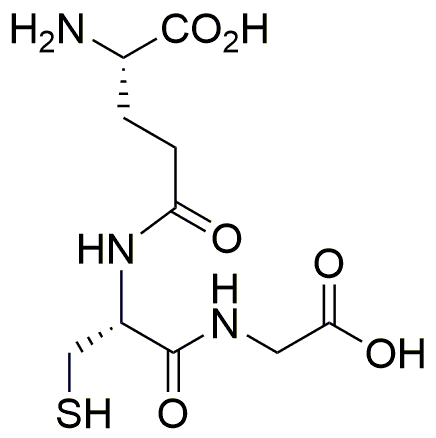Glutathione reduced form is widely utilized in research focused on:
- Antioxidant Therapy: This compound plays a crucial role in protecting cells from oxidative stress, making it valuable in developing treatments for conditions like cancer and neurodegenerative diseases.
- Detoxification Processes: It aids in detoxifying harmful substances in the liver, which is particularly beneficial in pharmaceutical formulations aimed at improving liver health.
- Skin Care Products: Due to its skin-rejuvenating properties, it is commonly found in cosmetics and dermatological formulations aimed at reducing signs of aging and promoting skin health.
- Food Preservation: Its antioxidant properties help in extending the shelf life of food products, making it a popular choice in the food industry for enhancing food safety and quality.
- Research in Cellular Biology: Glutathione is extensively used in laboratory studies to understand cellular processes, particularly in the context of cell signaling and metabolism.
General Information
Properties
Safety and Regulations
Applications
Glutathione reduced form is widely utilized in research focused on:
- Antioxidant Therapy: This compound plays a crucial role in protecting cells from oxidative stress, making it valuable in developing treatments for conditions like cancer and neurodegenerative diseases.
- Detoxification Processes: It aids in detoxifying harmful substances in the liver, which is particularly beneficial in pharmaceutical formulations aimed at improving liver health.
- Skin Care Products: Due to its skin-rejuvenating properties, it is commonly found in cosmetics and dermatological formulations aimed at reducing signs of aging and promoting skin health.
- Food Preservation: Its antioxidant properties help in extending the shelf life of food products, making it a popular choice in the food industry for enhancing food safety and quality.
- Research in Cellular Biology: Glutathione is extensively used in laboratory studies to understand cellular processes, particularly in the context of cell signaling and metabolism.
Documents
Safety Data Sheets (SDS)
The SDS provides comprehensive safety information on handling, storage, and disposal of the product.
Product Specification (PS)
The PS provides a comprehensive breakdown of the product’s properties, including chemical composition, physical state, purity, and storage requirements. It also details acceptable quality ranges and the product's intended applications.
Certificates of Analysis (COA)
Search for Certificates of Analysis (COA) by entering the products Lot Number. Lot and Batch Numbers can be found on a product’s label following the words ‘Lot’ or ‘Batch’.
*Catalog Number
*Lot Number
Certificates Of Origin (COO)
This COO confirms the country where the product was manufactured, and also details the materials and components used in it and whether it is derived from natural, synthetic, or other specific sources. This certificate may be required for customs, trade, and regulatory compliance.
*Catalog Number
*Lot Number
Safety Data Sheets (SDS)
The SDS provides comprehensive safety information on handling, storage, and disposal of the product.
DownloadProduct Specification (PS)
The PS provides a comprehensive breakdown of the product’s properties, including chemical composition, physical state, purity, and storage requirements. It also details acceptable quality ranges and the product's intended applications.
DownloadCertificates of Analysis (COA)
Search for Certificates of Analysis (COA) by entering the products Lot Number. Lot and Batch Numbers can be found on a product’s label following the words ‘Lot’ or ‘Batch’.
*Catalog Number
*Lot Number
Certificates Of Origin (COO)
This COO confirms the country where the product was manufactured, and also details the materials and components used in it and whether it is derived from natural, synthetic, or other specific sources. This certificate may be required for customs, trade, and regulatory compliance.


